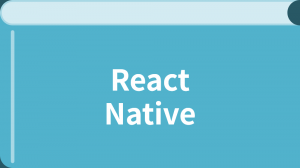阅读(2037)
赞(0)
iOS 应用程序状态
2015-11-06 15:28:13 更新
AppStateIOS 可以告诉你应用程序是在前台还是在后台,而且状态更新时会通知你。 在处理推送通知时,AppStateIOS 经常被用于判断目标和适当的行为。
iOS 应用程序状态
Active - 应用程序在前台运行
Background - 应用程序在后台运行。用户正在使用另一个应用程序或者在主屏幕上。
Inactive - 这是一种过渡状态,目前不会在React Native的应用程序上发生。
想要获取更多的信息,见 Apple's documentation
基本用法
为了查看当前的状态,你可以检查 AppStateIOS.currentState,该方法会一直保持最新状态。然而,当 AppStateIOS在桥接器上检索currentState时,在启动时它将会为空。
getInitialState: function() {
return {
currentAppState: AppStateIOS.currentState,
};
}, componentDidMount: function() {
AppStateIOS.addEventListener('change', this._handleAppStateChange);
}, componentWillUnmount: function() {
AppStateIOS.removeEventListener('change', this._handleAppStateChange);
}, _handleAppStateChange: function(currentAppState) {
this.setState({ currentAppState, });
}, render: function() {
return (
<Text>Current state is: {this.state.currentAppState}</Text>
);
},这个例子似乎只能说"当前状态是:活跃的"因为在 active 状态时,应用程序只对用户是可见的,空状态只能是暂时的。
方法
static addEventListener(type: string, handler: Function)
通过监听 change 事件类型和提供处理程序,为应用程序状态变化添加一个处理程序。
static removeEventListener(type: string, handler: Function)
通过传递 change 事件类型和处理程序,删除一个处理程序。
例子
'use strict'; var React = require('react-native'); var {
AppStateIOS,
Text,
View
} = React; var AppStateSubscription = React.createClass({
getInitialState() { return {
appState: AppStateIOS.currentState,
previousAppStates: [],
};
},
componentDidMount: function() {
AppStateIOS.addEventListener('change', this._handleAppStateChange);
},
componentWillUnmount: function() {
AppStateIOS.removeEventListener('change', this._handleAppStateChange);
},
_handleAppStateChange: function(appState) { var previousAppStates = this.state.previousAppStates.slice();
previousAppStates.push(this.state.appState); this.setState({
appState,
previousAppStates,
});
},
render() { if (this.props.showCurrentOnly) { return ( <View>
<Text>{this.state.appState}</Text>
</View>
);
} return ( <View>
<Text>{JSON.stringify(this.state.previousAppStates)}</Text>
</View>
);
}
});
exports.title = 'AppStateIOS';
exports.description = 'iOS app background status';
exports.examples = [
{
title: 'AppStateIOS.currentState',
description: 'Can be null on app initialization',
render() { return <Text>{AppStateIOS.currentState}</Text>; }
},
{
title: 'Subscribed AppStateIOS:',
description: 'This changes according to the current state, so you can only ever see it rendered as "active"',
render(): ReactElement { return <AppStateSubscription showCurrentOnly={true} />; }
},
{
title: 'Previous states:',
render(): ReactElement { return <AppStateSubscription showCurrentOnly={false} />; }
},
];← 应用程序注册表

